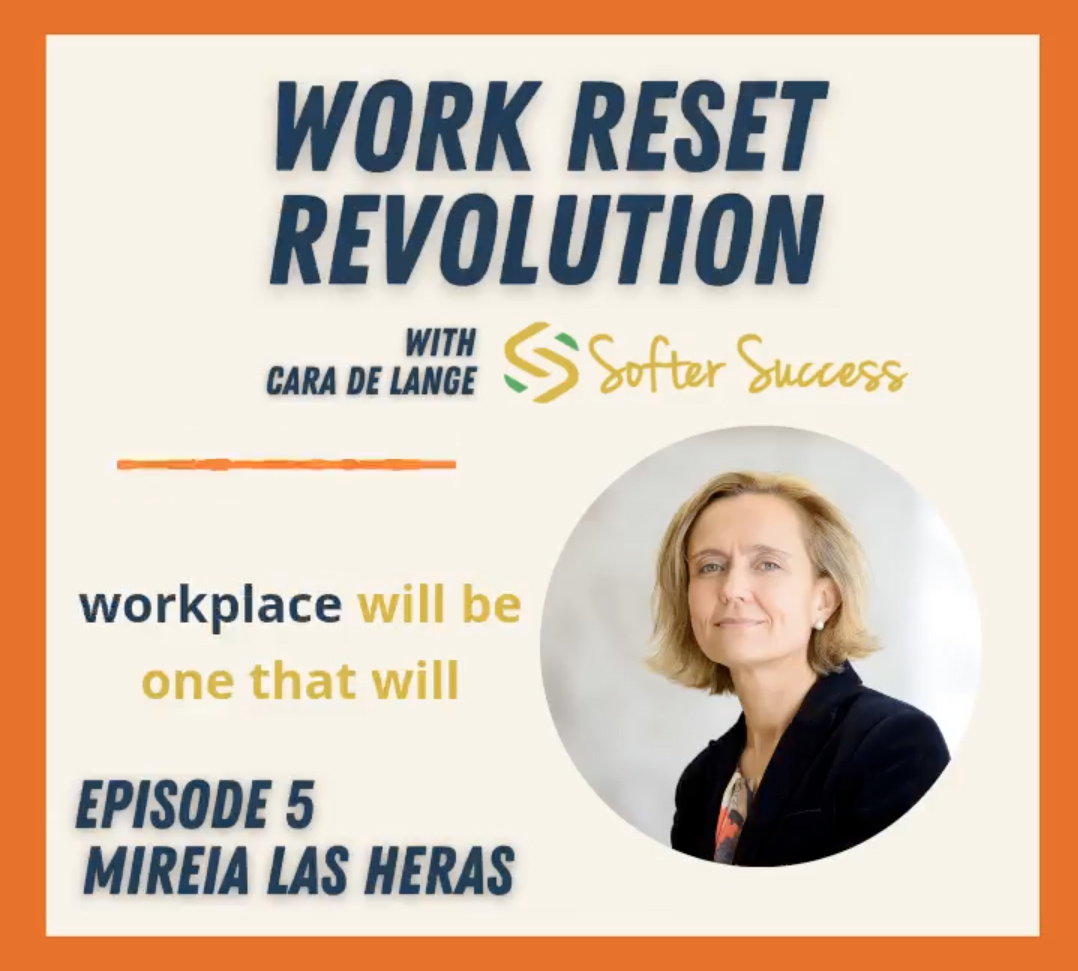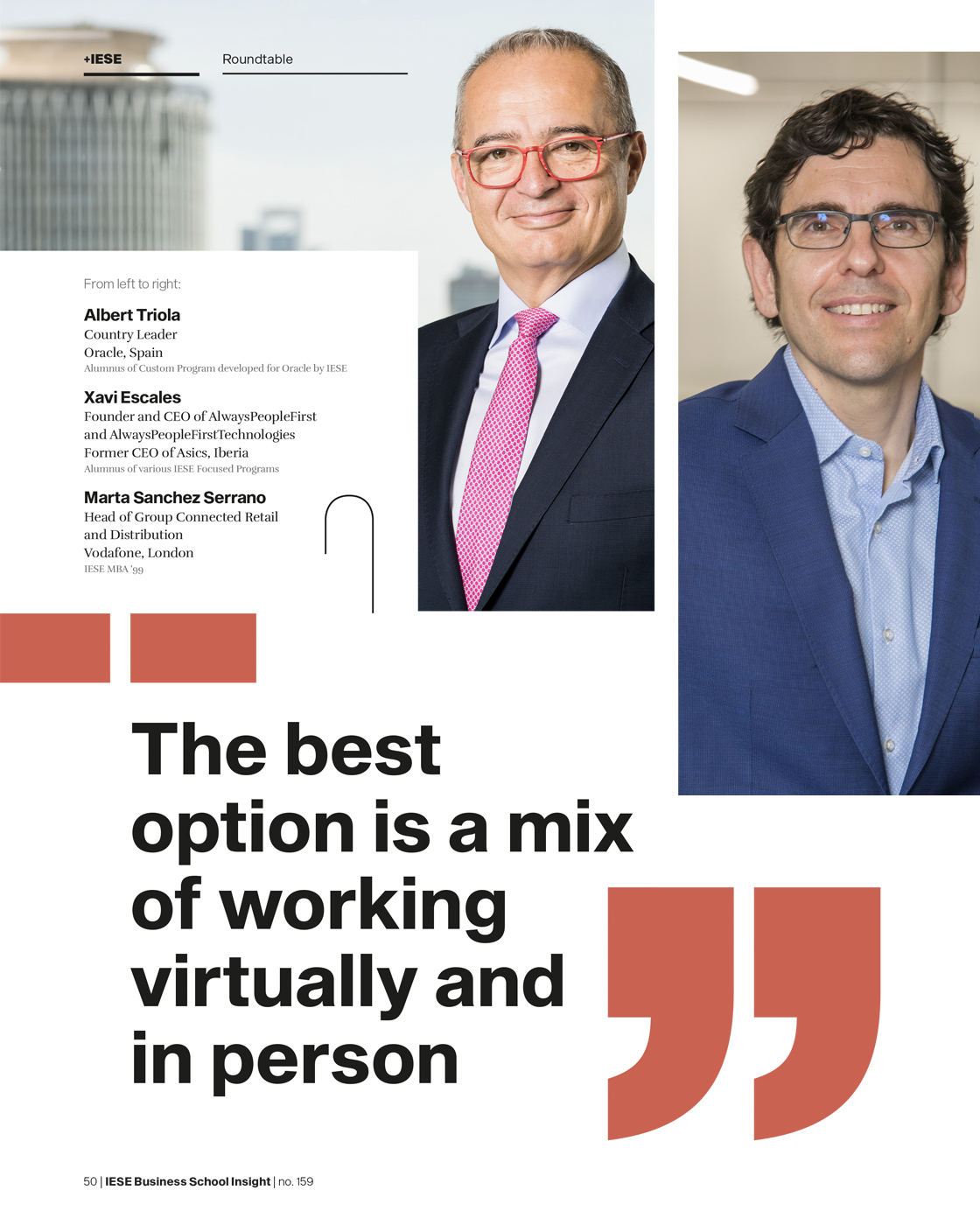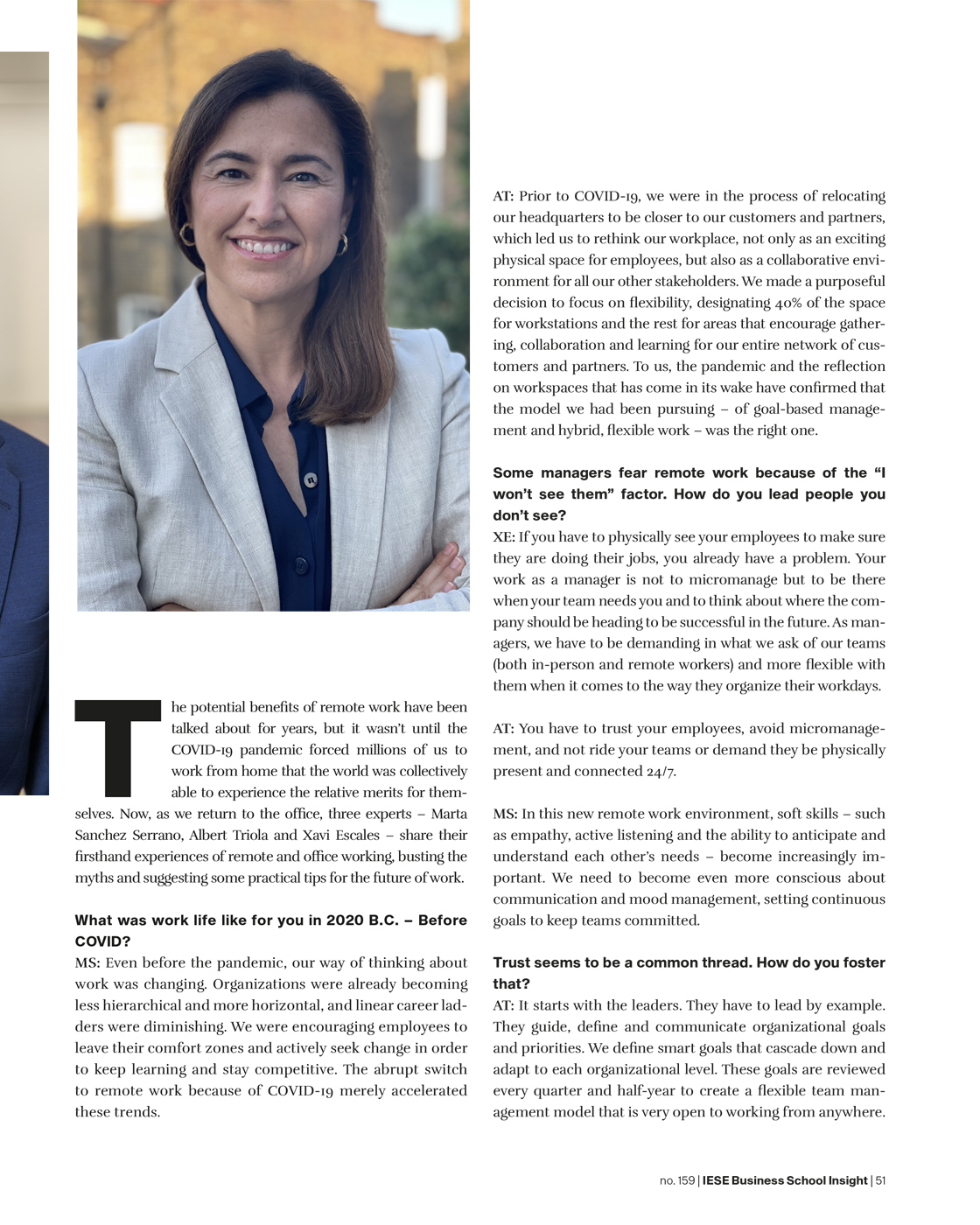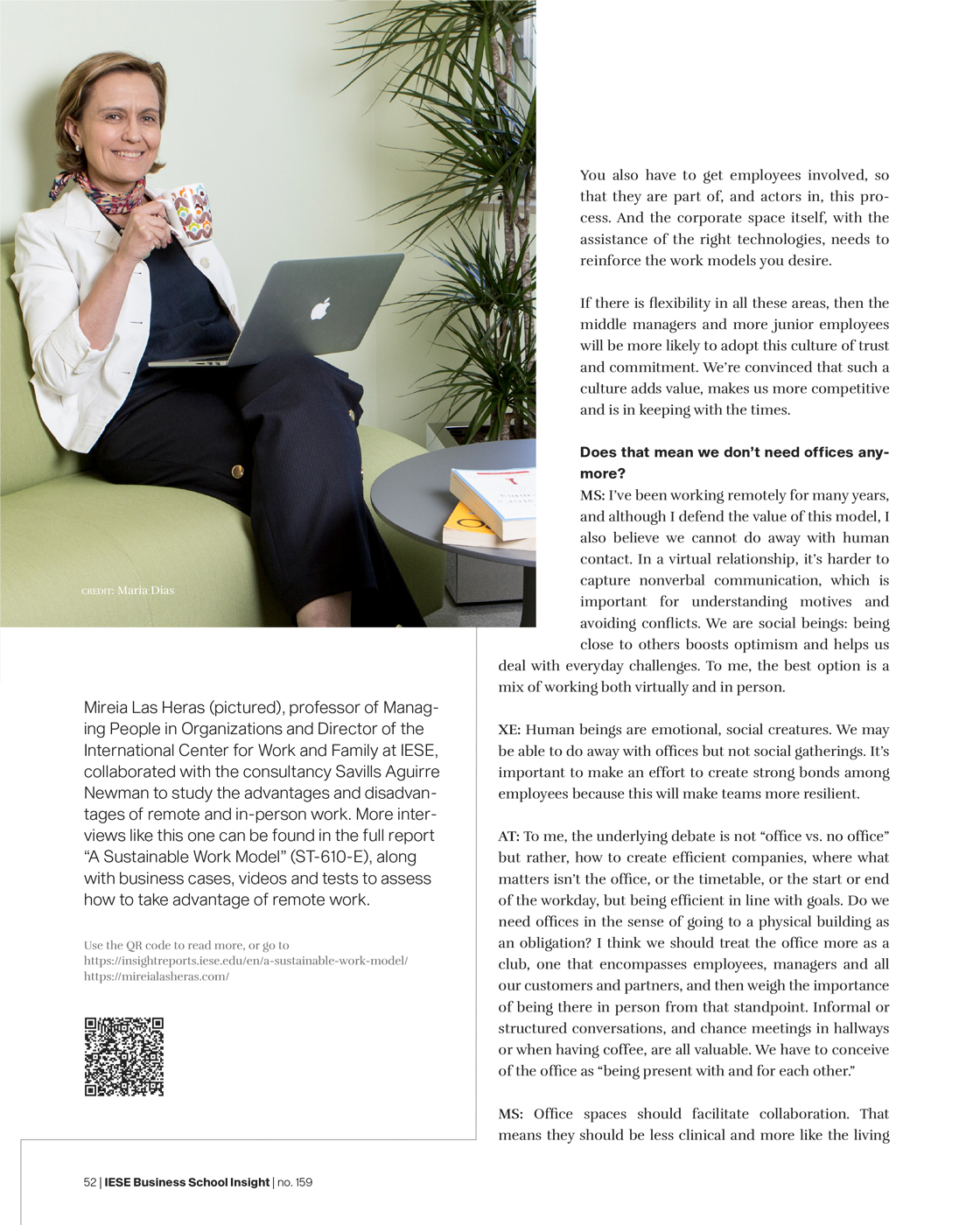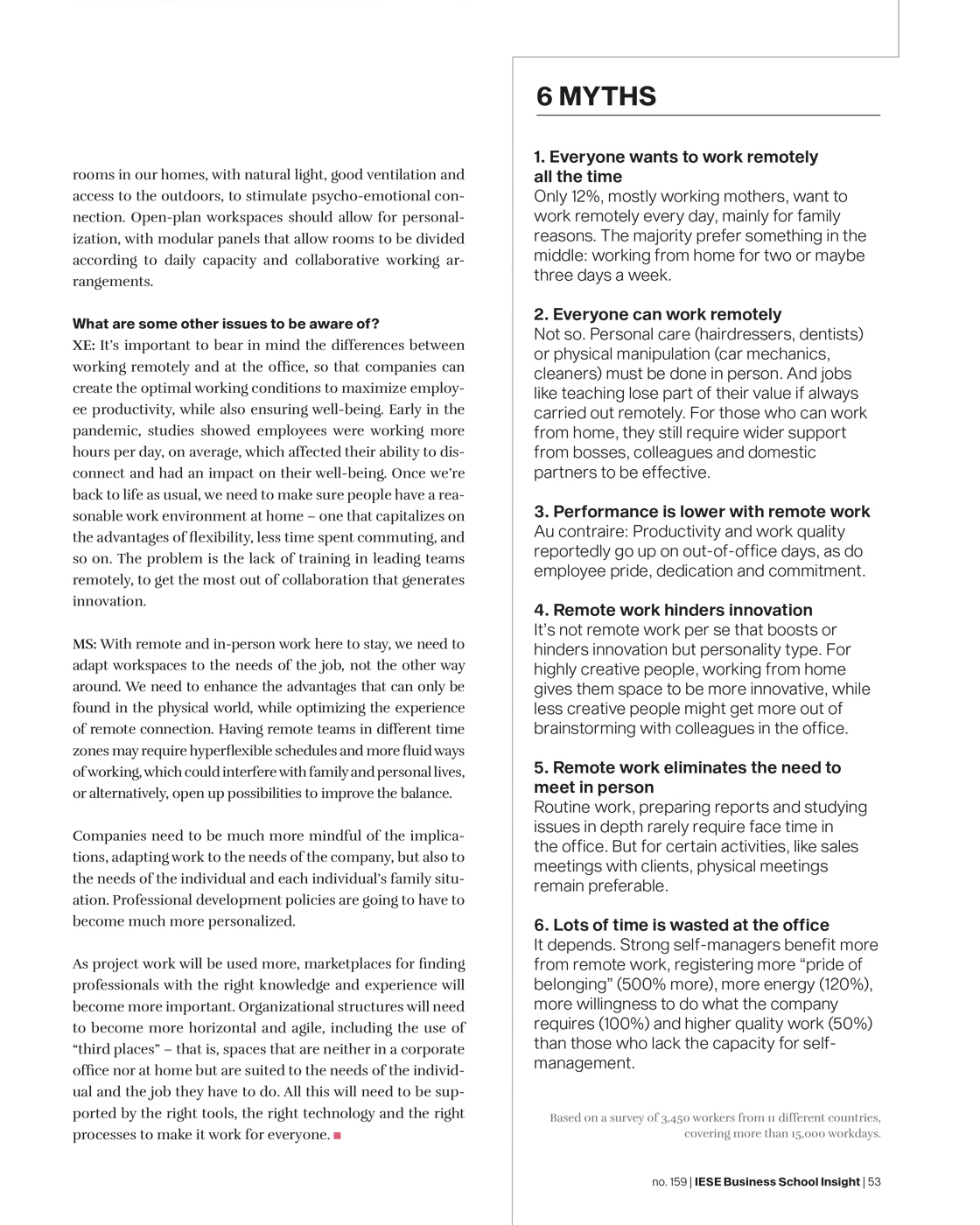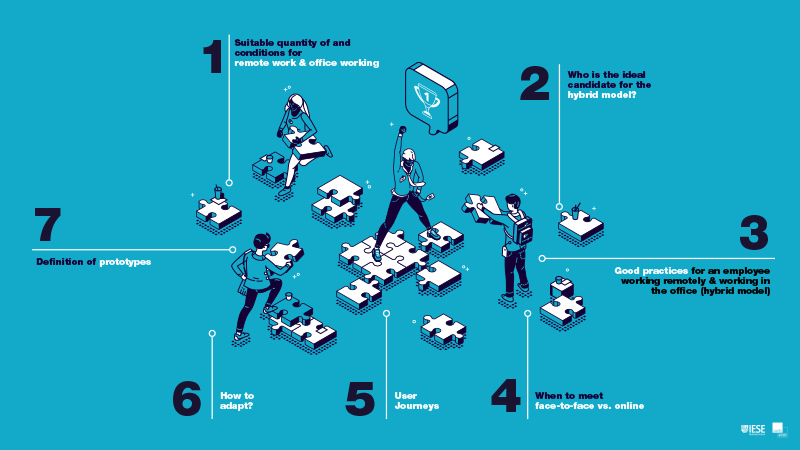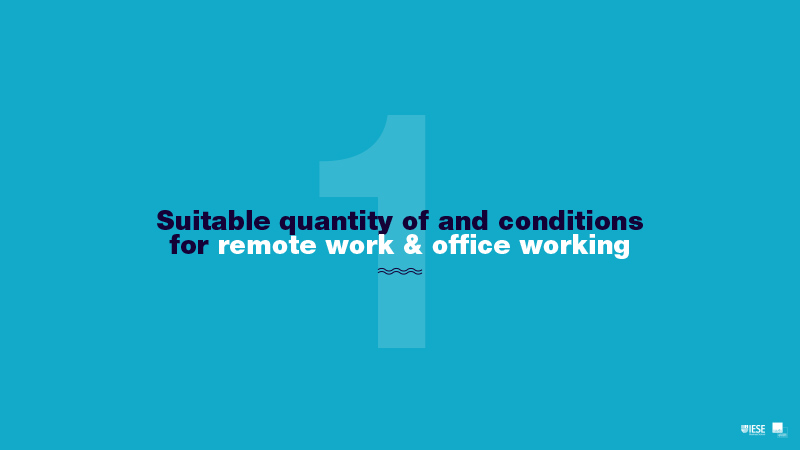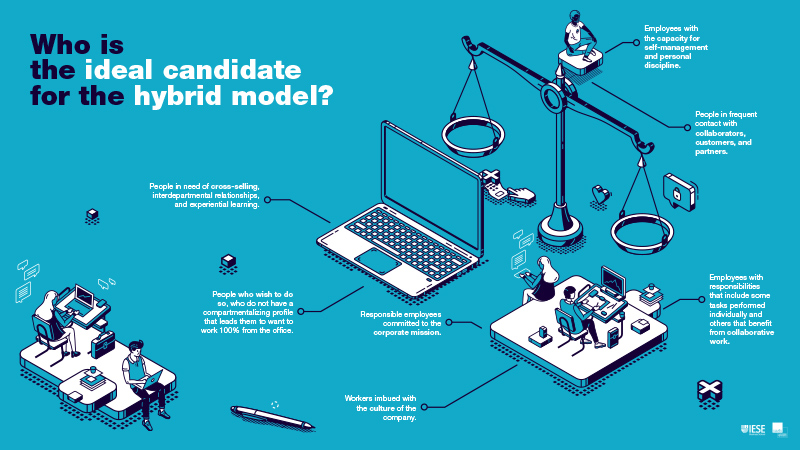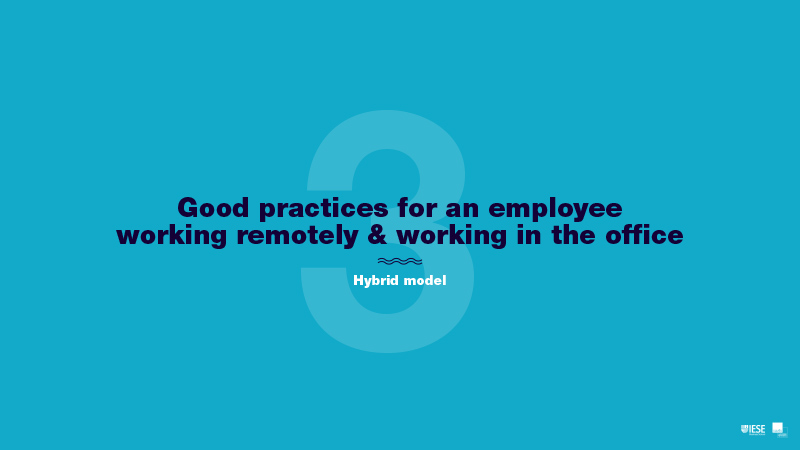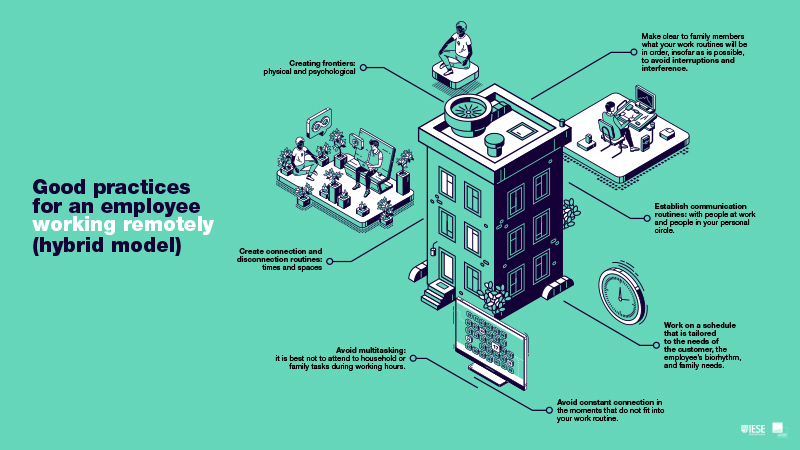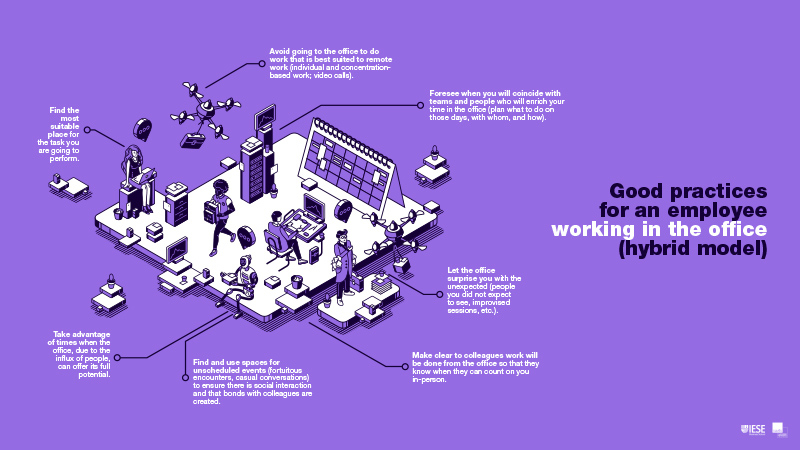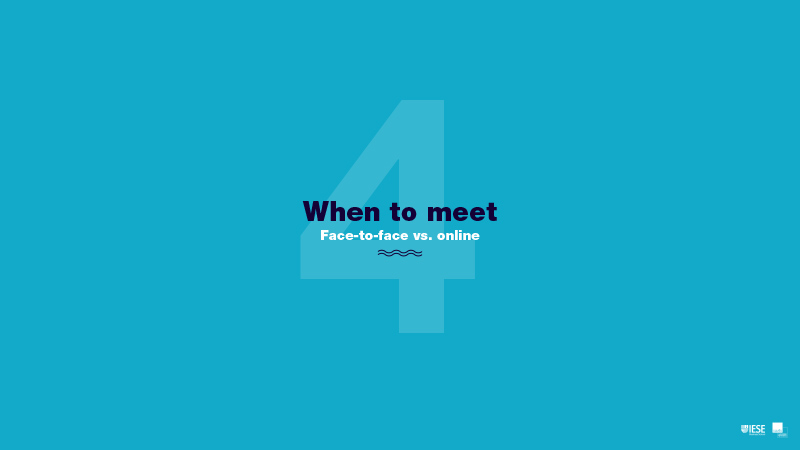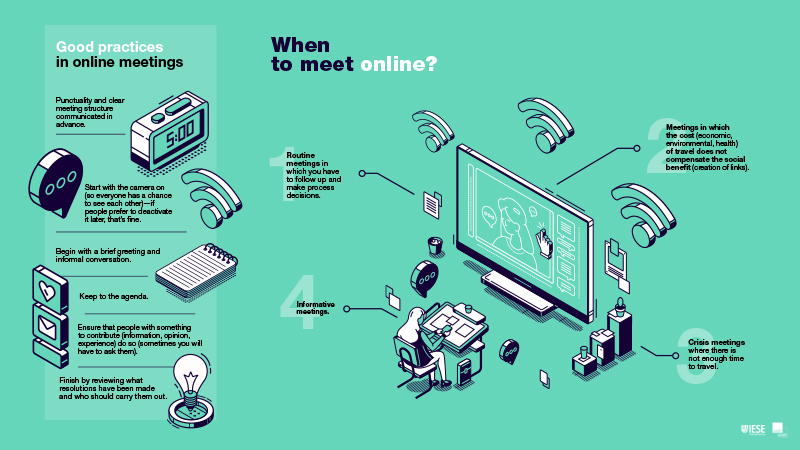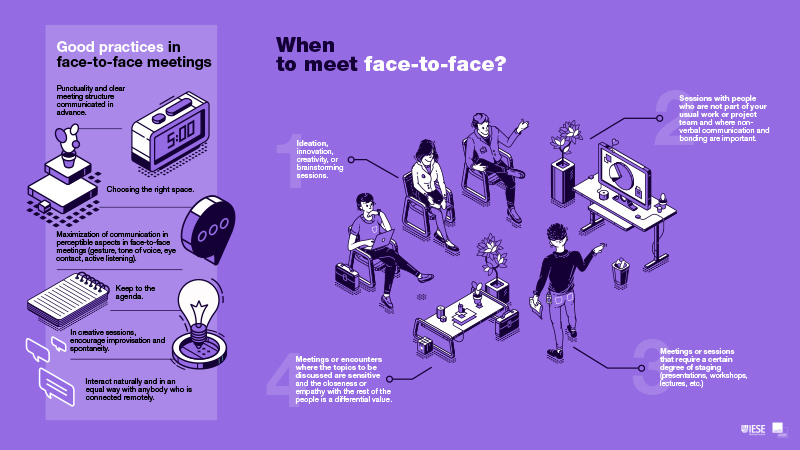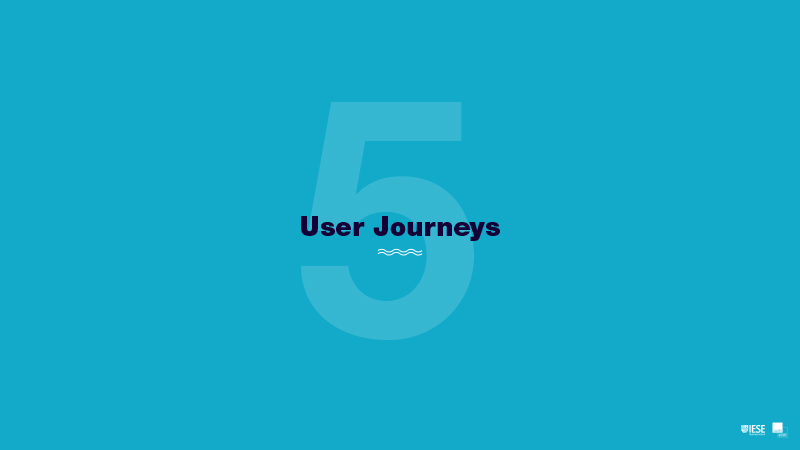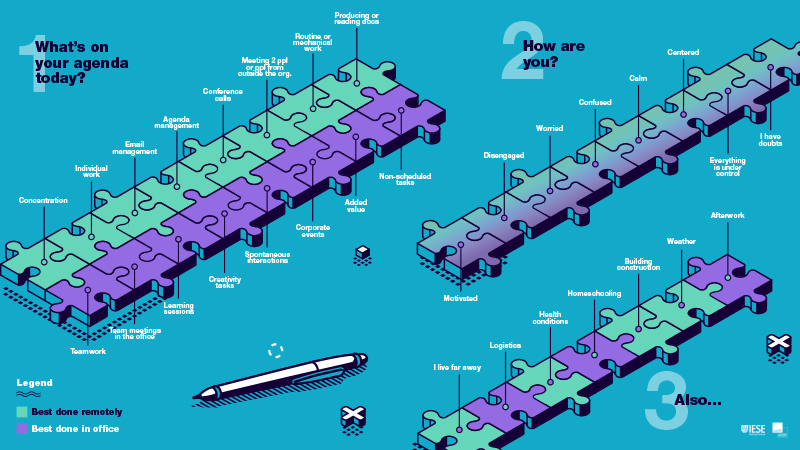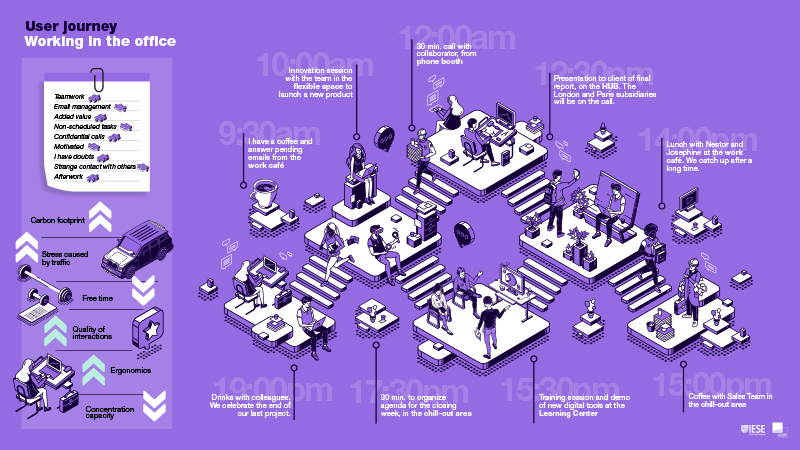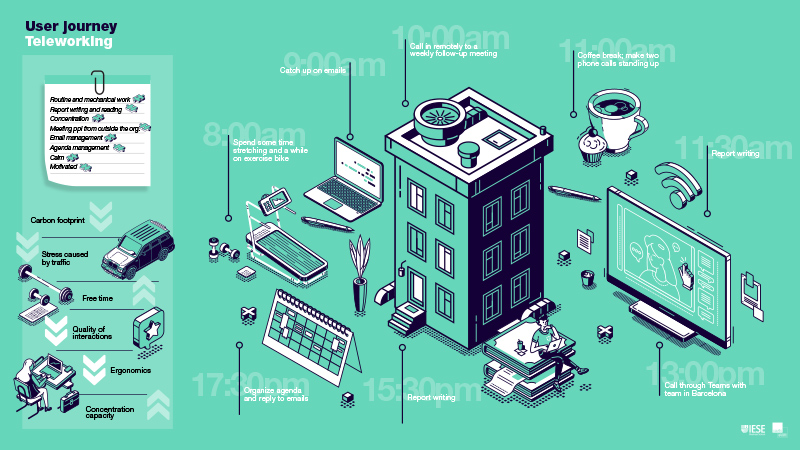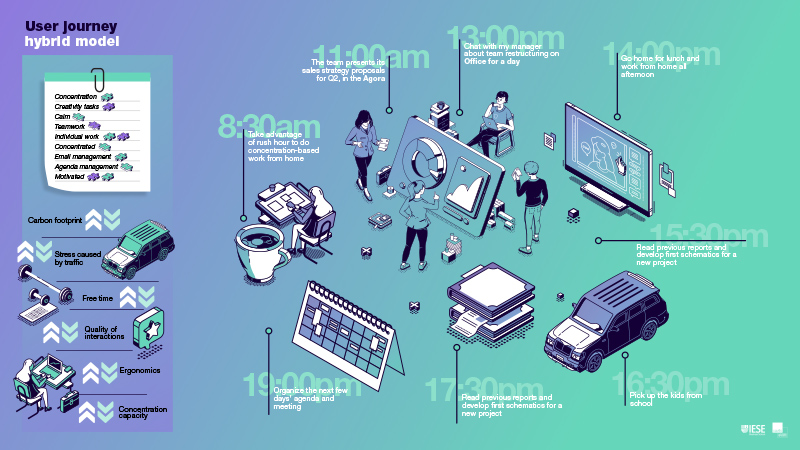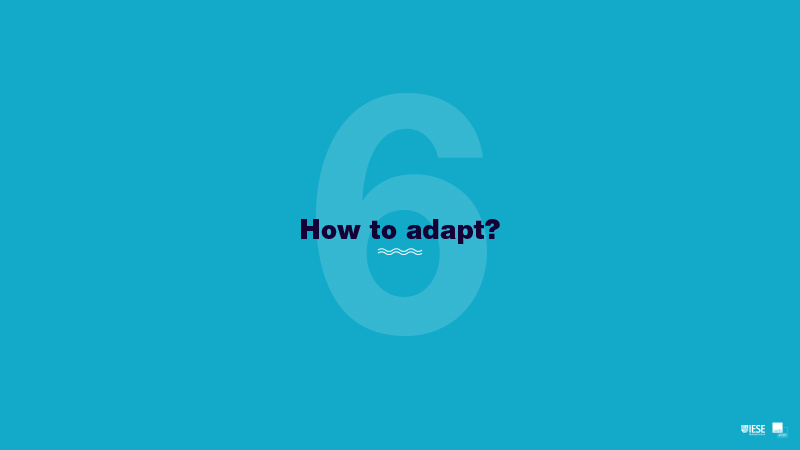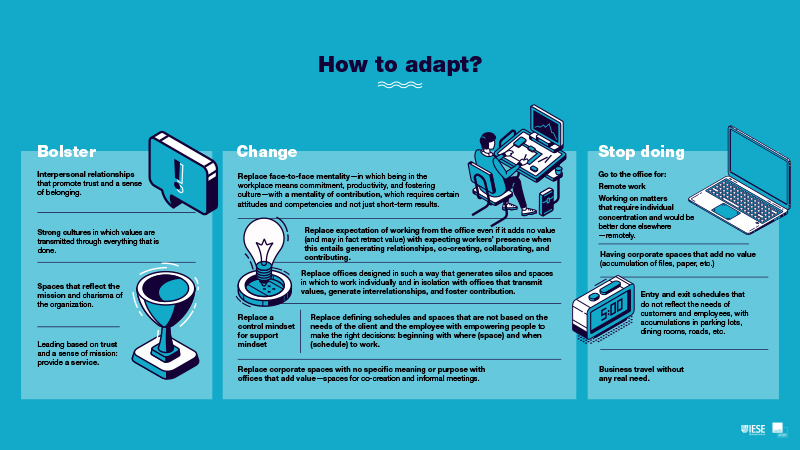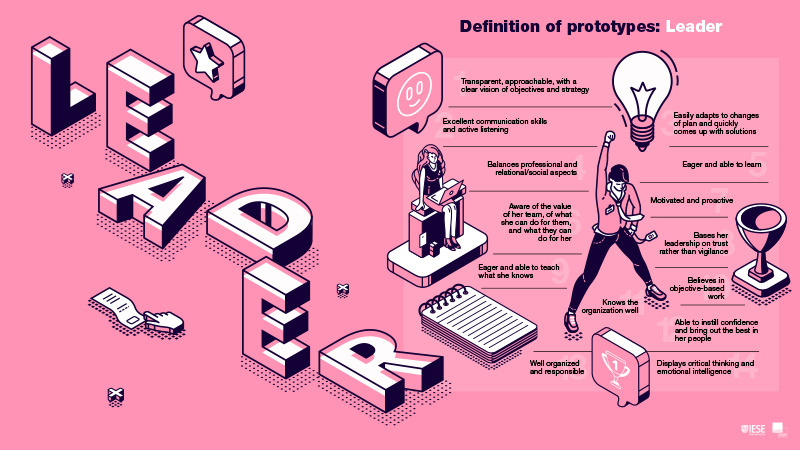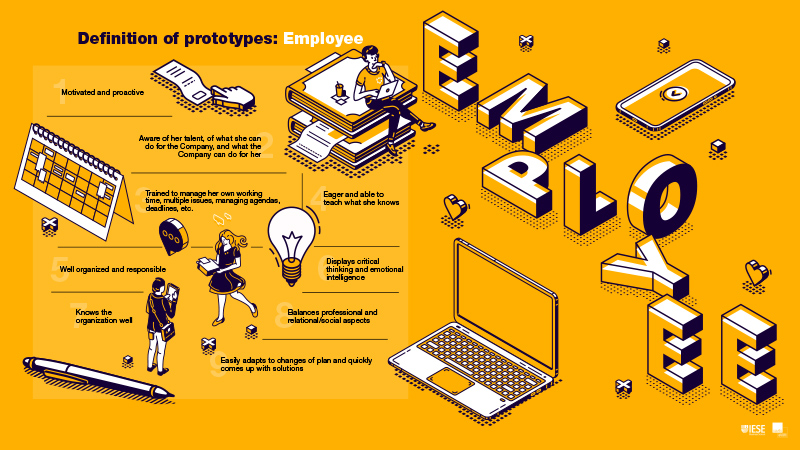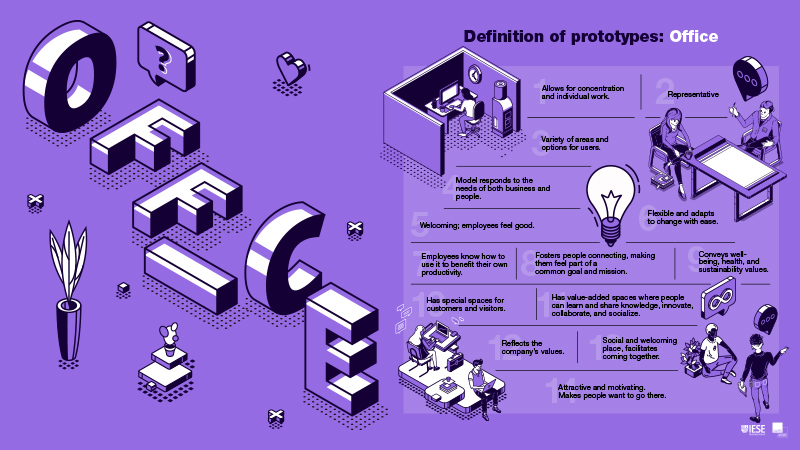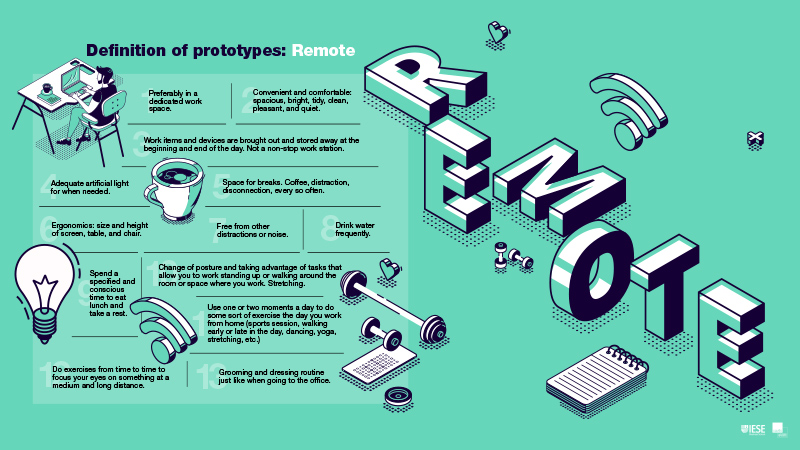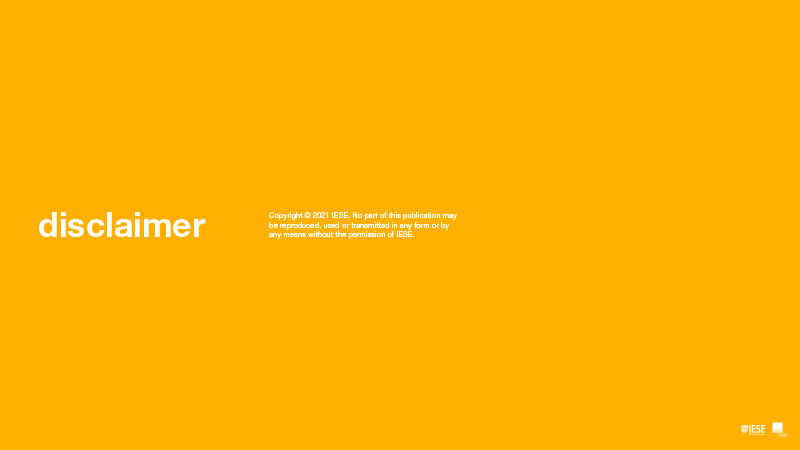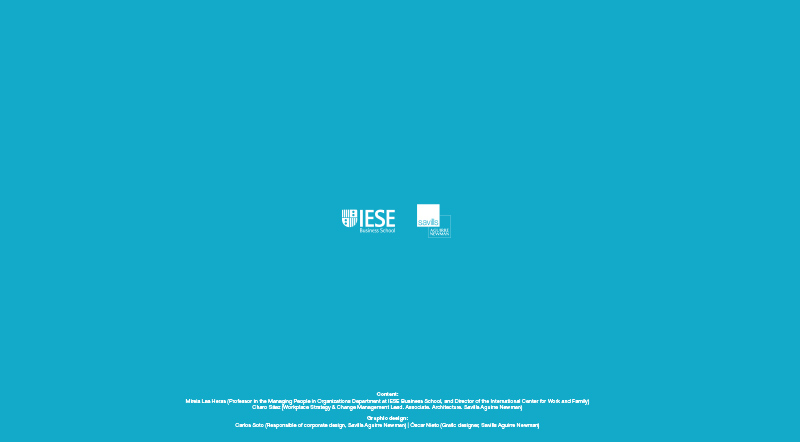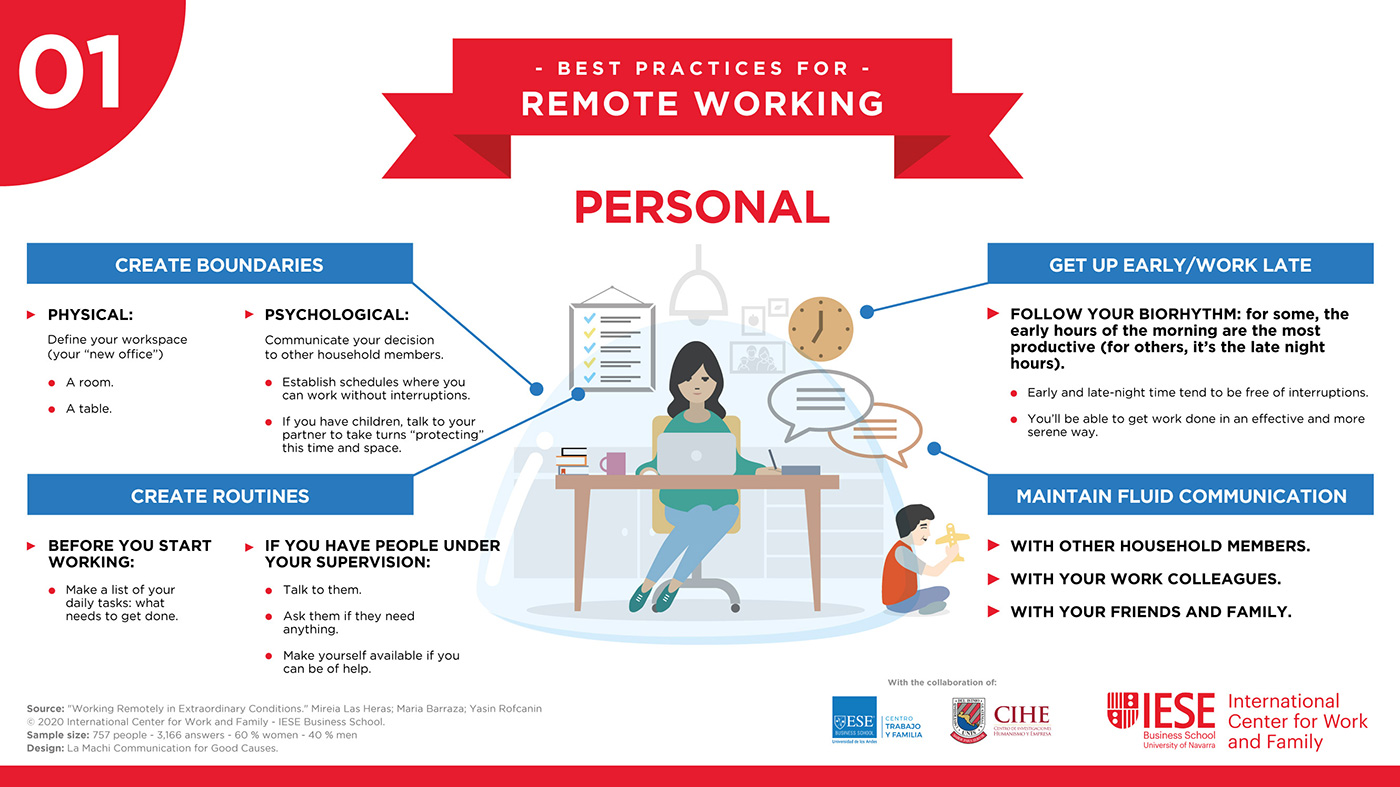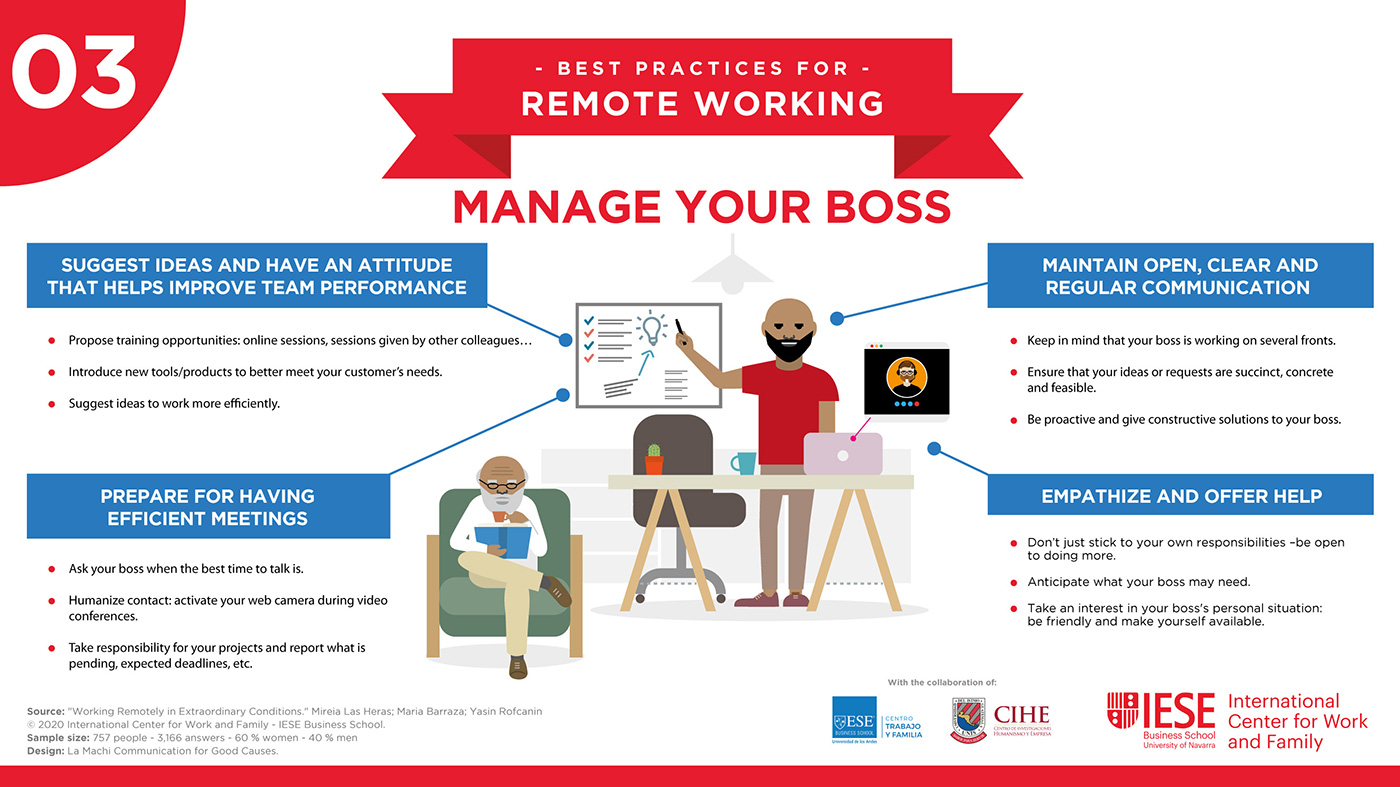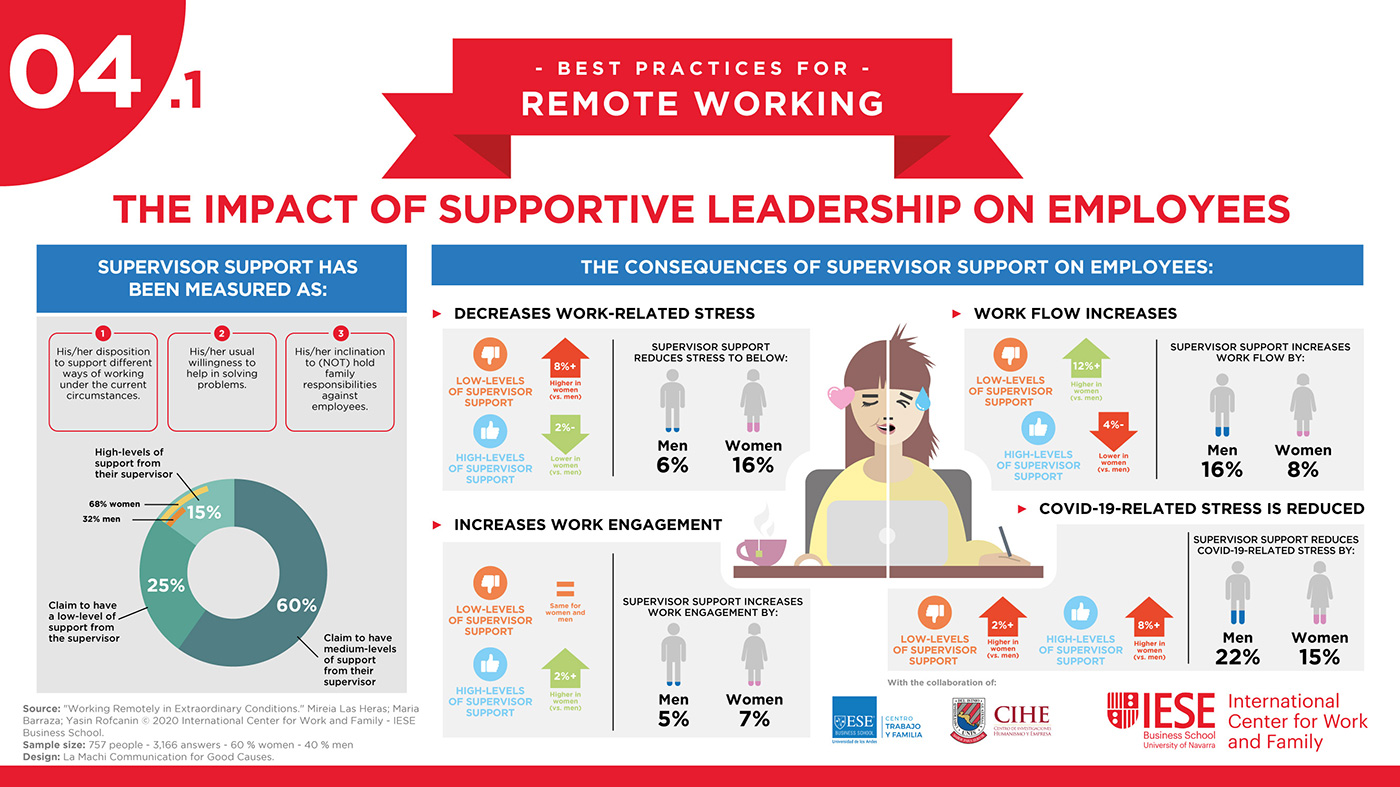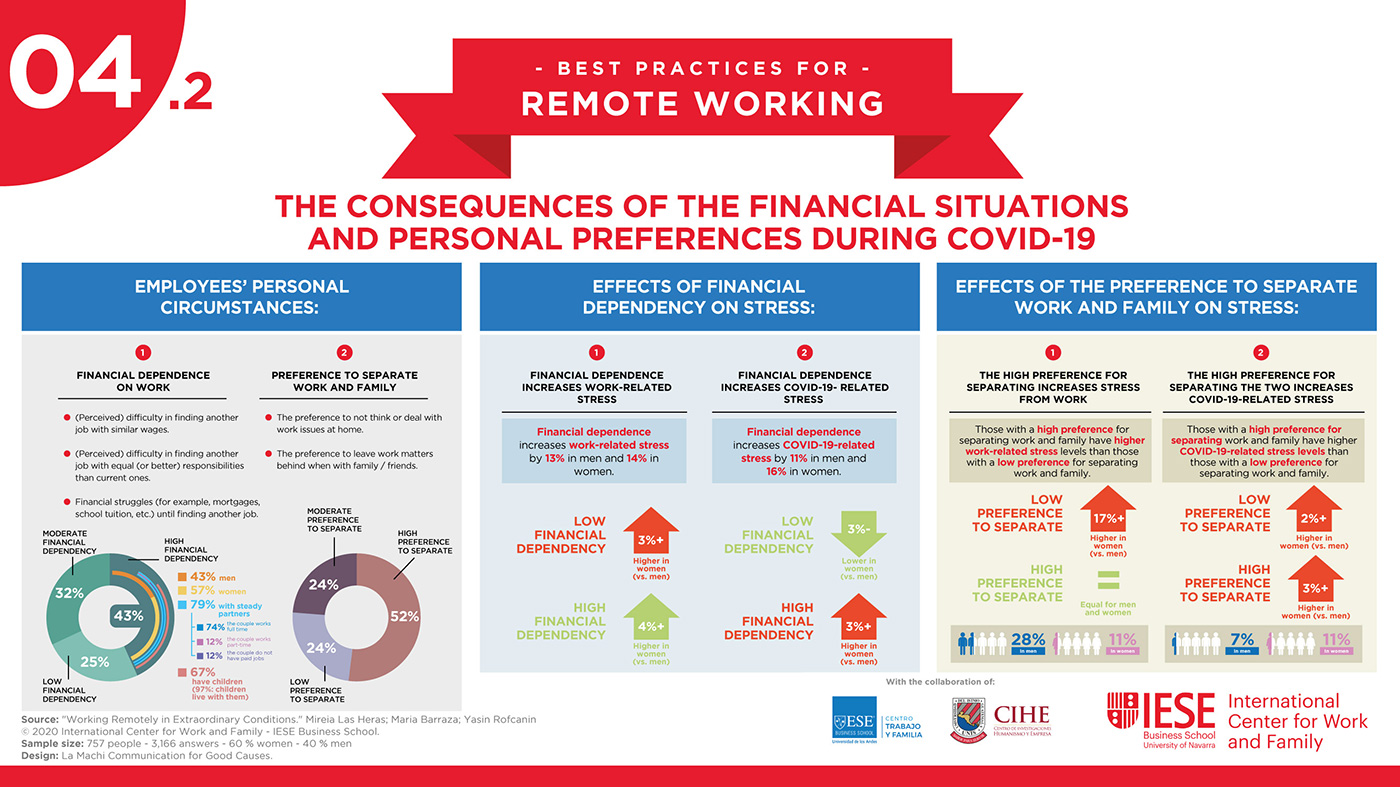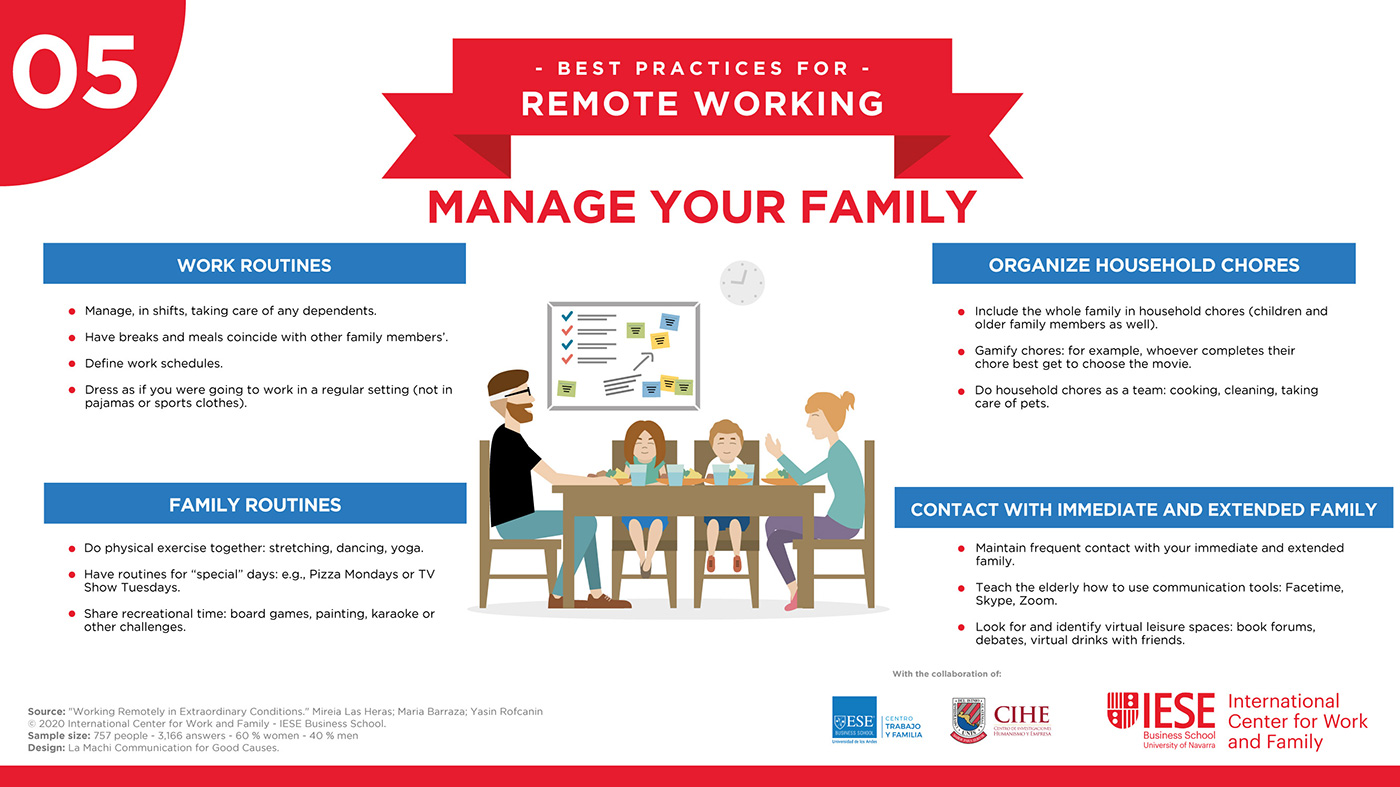Research reports
Telecommuting
Working remotely has positive outcomes for employees and their families, as well as for organizations and societies.
Working remotely during the COVID-19 emergency situation
A Sustainable Work Model: Towards Remote and in the Office Work
Authors: Prof Mireia Las Heras and María Barraza (IESE Business School)
With the collaboration of: Júlia Gifra (IESE Business School), Charo Sáez and Leyre Octavio de Toledo (Savills Aguirre Newman)
In recent years, we have witnessed a burgeoning interest in fostering remote work. With the development of communication tools, digitalization, the Internet, and cloud storage, it is increasingly easier to stay in touch and work remotely. However, there is no question that the global outbreak of COVID-19 has led millions of workers to work completely outside the space they are usually assigned in places like offices and factories.
The remote work we have experienced primarily stemmed from the health emergency and was not the outcome of a pilot program, as there was no time to test, program, or equip us with tools. Instead, it was a situation in which we worked from home, oftentimes without clearly predefined guidelines, without planned monitoring tools, and under time pressure and the fear caused by the uncertain course of the pandemic. Remote work has developed largely as the consequence of mobility restrictions because of widespread lockdowns and to avoid potential infection caused by proximity to people with COVID-19.
We at the International Center for Work and Family (ICWF, at IESE) have been talking about the potential benefits of remote work for years. We have long been steadfast advocates of remote work because of the unquestionably positive consequences it can have for workers, companies, and society. From our vantage point, it has always been viewed as a strategy to promote well-being, work-family balance, productivity, and sustainability.
In a 2013 study, among many conducted by the ICWF, we found that 16% of workers stated that their company offered them the possibility to work remotely some days. By 2015, this rate had risen to 29%, in 2017 it dropped to 20%, and then it held steady in 20191.
However, these figures were far from the real prevalence of remote work. According to the National Statistical Institute, 4.3% of Spanish workers worked remotely somewhat regularly in 2018 (Ministry of Labor and Social Security), a figure far behind the European countries where this practice is more advanced, especially in the Netherlands (14%) and Finland (13.3%). In figures from that same year, 2018, the difference was even greater in relation to occasional remote work: while in Spain the rate was 3.2%, in countries that were further along this road, like Sweden and Finland, the rates were 29.4% and 25%, respectively.
In this context, the opportunity arose to partner with the consultancy Savills Aguirre Newman to conduct this study on how to plan work from a sustainable perspective in all dimensions to seek a suitable balance between in-person and remote work. We are pleased to present this study as the outcome of this partnership.
When trying to define new forms of work, we see how some beliefs about the benefits and risks of in-person work have become more prominent.
The purpose of this study is to offer a balanced view of the advantages and disadvantages of remote and in-person work. By doing so, we aim to foster a rational use of these spaces and improve the quality of life of employees and their families while contributing to achieving more sustainable and eco-friendly surroundings.
Spoiler alert: we want to warn readers that the perspective we support is that remote work, complemented by in-person work, brings the most advantages to all the aforementioned stakeholders: employees and their families, the company, and society as a whole.
Many of the figures we show are primary sources; that is, we have collected them at the ICWF in studies conducted either previous to the ¬COVID-19 pandemic or during the lockdown (we will state this in each case). What we experienced during the health scare was not the ideal “cruise” that we all expected remote work to be. In reality, it was more like bailing water from a drifting boat with icebergs threatening both port and starboard. However, it has also taught us invaluable lessons that enable us to reflect on the real possibilities of remote work. We have the firm hope that we can use what we have all been through to develop greater resiliency among employees and companies alike, which adapt to circumstances, seek solutions, and align themselves around one goal: the common good.
We aim for this report to serve as a guide now that workers and employers do want to embark on a journey toward a new, more humane, and sustainable way of working.
